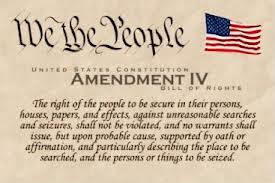United States v. Black. In a strongly worded opinion, the United States Court of Appeals for the Fourth Circuit stated:
The facts of this case give us cause to pause and ponder the slow systematic erosion of the Fourth Amendment protections for a certain demographic. In the words of Dr. Martin Luther King Jr., we are reminded that “we are tied together in a single garment of destiny, caught in an inescapable network of mutuality,” that our individual freedom is inextricably bound to the freedom of others. Thus, we must ensure that the Fourth Amendment rights of allindividuals are protected.
At least four times in 2011, we admonished against the Government’s misuse of innocent facts as indicia of suspicious activity. See here, here, here and here. We encounter yet another situation where the Government attempts to meet its Terry burden by patching together a set of innocent, suspicion-free facts, which cannot rationally be relied on to establish reasonable suspicion.
In some circumstances, however, police abuse this discretion, and we must remind law enforcement that the Fourth Amendment protects unreasonable search and seizures. Because in this case, we find the police disregarded the basic tenets of the Fourth Amendment, we reverse.
Facts
Officers from the Charlotte-Mecklenburg Police Department were on patrol when they saw a parked car at the gas pump of a gas station. The driver and sole occupant, Dior Troupe, drove off after 3 minutes. They followed the car to a nearby parking lot. The license tag came back clean. The driver joined a group of five other men, including Nathaniel Black, talking in the parking lot. The officers called for back-up and approached the men. As they approached, Troupe pointed to the gun in a holster on his hip (open carry is legal in North Carolina). Black voluntarily provided his ID to police which the officer pinned to his shirt as he questioned the others. Black got up to leave but was told he wasn’t free top leave. He continued to walk away until an officer grabbed his arm. A struggled then followed where Black was taken to the ground, placed in handcuffs, and a firearm was recovered from him. Black was charged in a one-count indictment for possession of a firearm by a convicted felon.
Procedural History
The District Court denied Black’s motion to suppress the gun on the basis it was the fruit of an unlawful seizure. Black entered a conditional plea of guilty and reserved his right to appeal the denial of his suppression motion. Black was sentenced to 180 months imprisonment.
Issue
Was Black seized for purposes of the Fourth Amendment, and did that seizure comport with the reasonable suspicion standard set forth in Terry.
Analysis
A person is seized within the meaning of the Fourth Amendment if, “in view of all the circumstances surrounding the incident a reasonable person would have believed he was not free to leave.” United States v. Gray, 883 F.2d 320, 322 (4th Cir. 1989) (quoting United States v. Mendenhall, 446 U.S. 544, 554 (1980)). The Court listed seven (7) factors to determine if a reasonable person felt free to leave:
- Number of police officers at the scene;
- Were police in uniform;
- Did police display their weapons;
- Did police “touch the defendant or make any physical attempt to restrain his movement;
- Language and tone used by police indicating that compliance might be compelled;
- Did police tell the defendant he was suspected of “illegal activity rather than treating the encounter as ‘routine’ in nature”;
- If police requested some form of ID, did they promptly return it.
Mendenhall, 446 U.S. at 554; Gray, 883 F.2d at 322-23.
Considering the totality of the circumstances it was clear Black was seized under Fourth Amendment purposes. There was a “collective show of authority” by police, Troupe had his weapon seized, the men were being frisked, and Black’s ID was retained. The court found that Black was at the point his ID was pinned to the Officers uniform while they were frisking the men.
To be lawful, a Terry stop “must be supported at least by a reasonable and articulable suspicion that the person seized is engaged in criminal activity. Here, an individuals presence at a gas station; prior arrest history of another individual; lawful possession and display of a weapon by another; Black’s submission of his ID, all of which occurred at night in a high crime area, failed to support reasonable suspicion to detain Black
The court was clear in admonishing the government’s patch work of innocent, suspicion free facts which could not be rationally relied upon to establish reasonable suspicion. The officers suspicion that a lone driver at a gas pump who he did not observe drive into the gas station is engaged in drug trafficking borders on absurd. Other than Troupe, there was no one else in the vehicle, and it defies reason to believe that Troupe was engaged in drug trafficking – an act that by definition involves transmitting drugs to another person.
I’m stating this quote twice now but it is so important to the argument for those of us that believe in upholding the erosion of the Fourth Amendment over the years that it bears repeating again:
The facts of this case give us cause to pause and ponder the slow systematic erosion of the Fourth Amendment protections for a certain demographic. In the words of Dr. Martin Luther King Jr., we are reminded that “we are tied together in a single garment of destiny, caught in an inescapable network of mutuality,” that our individual freedom is inextricably bound to the freedom of others. Thus, we must ensure that the Fourth Amendment rights of all individuals are protected.

